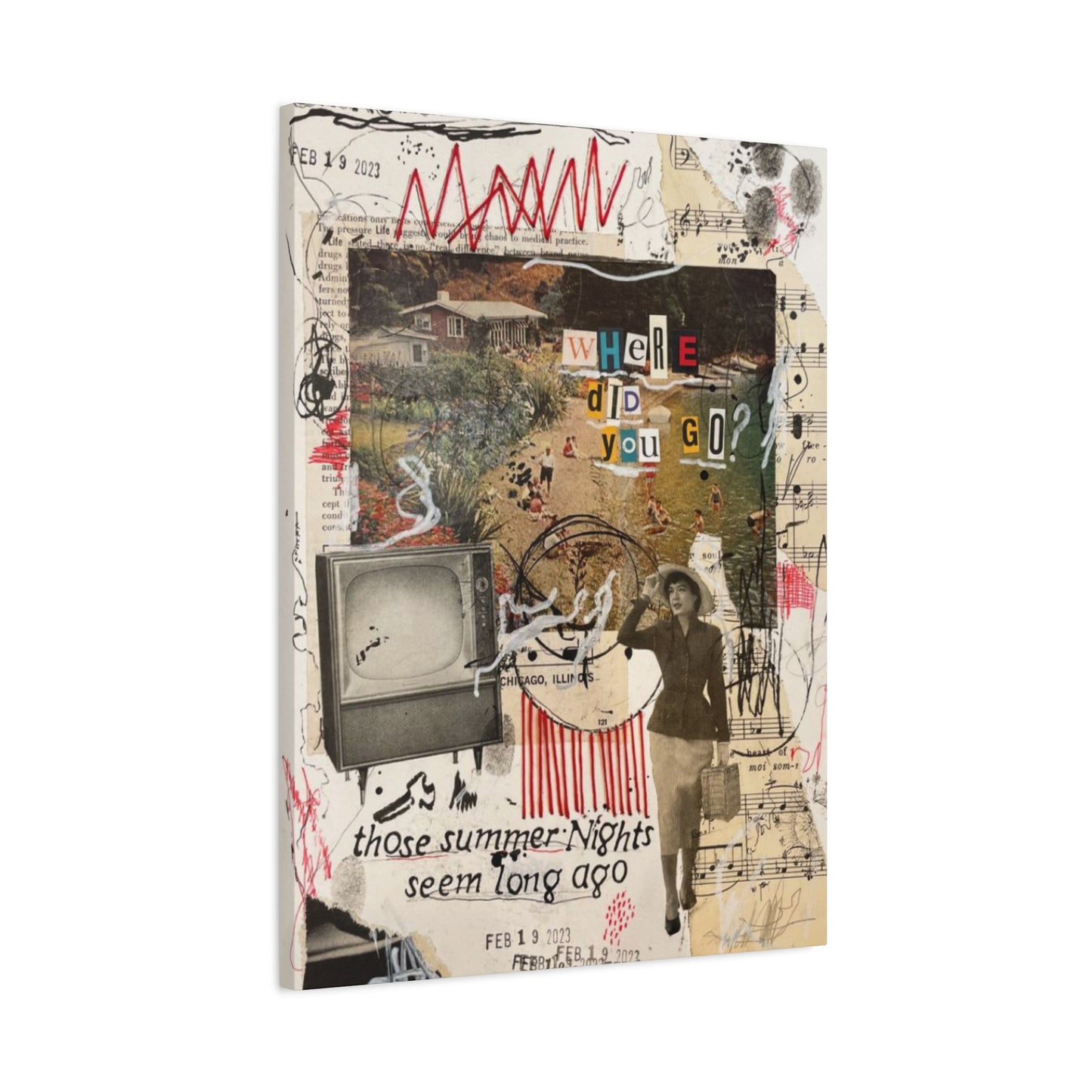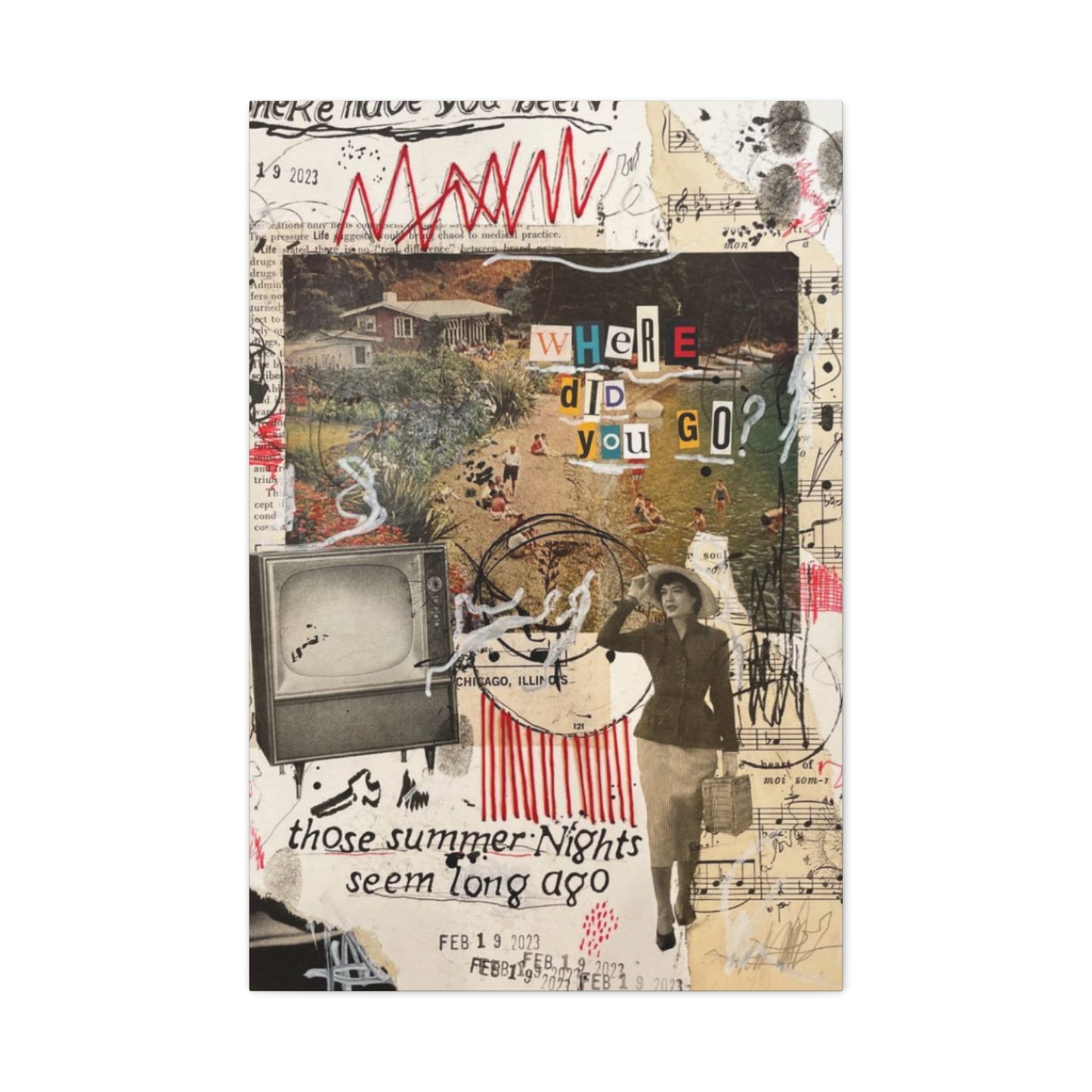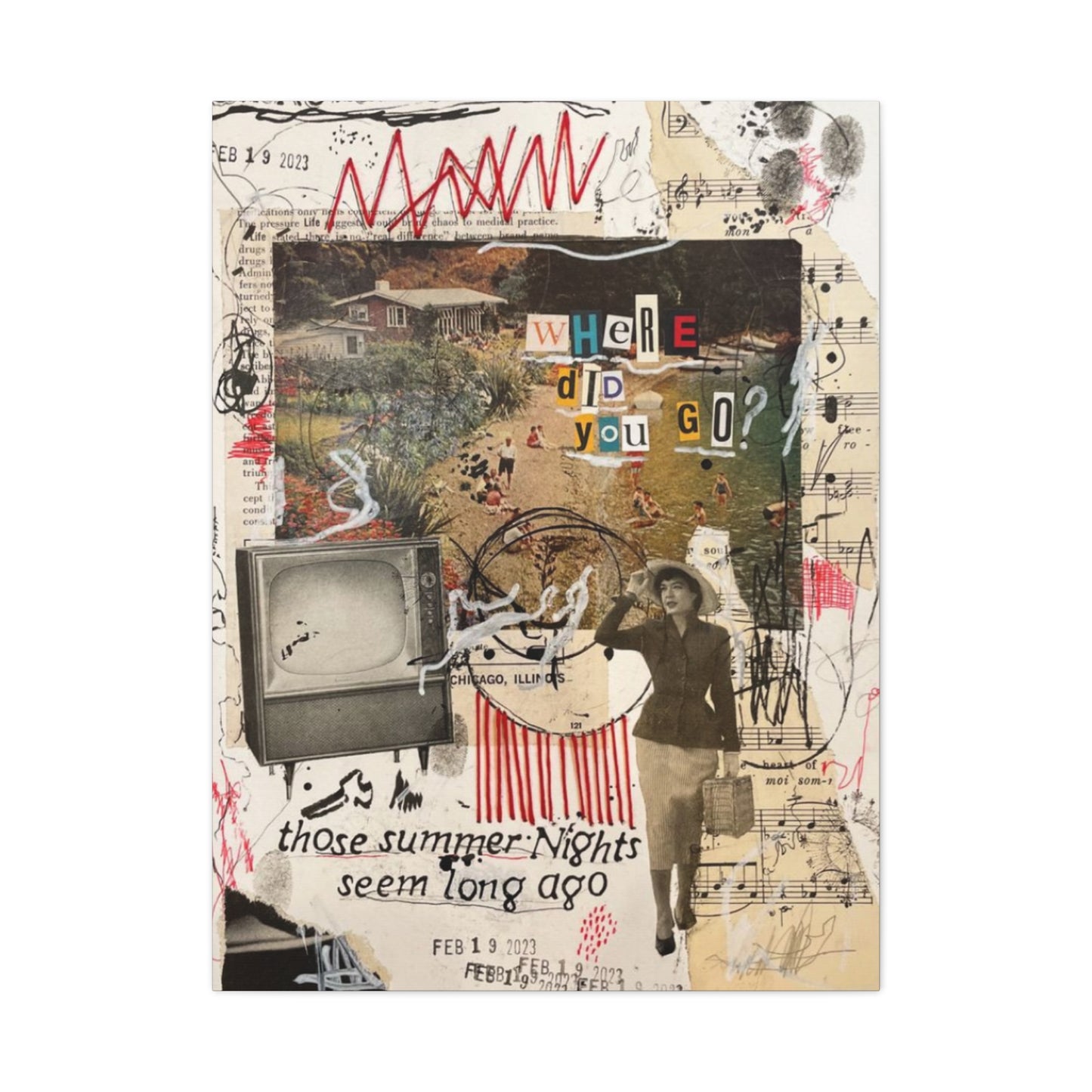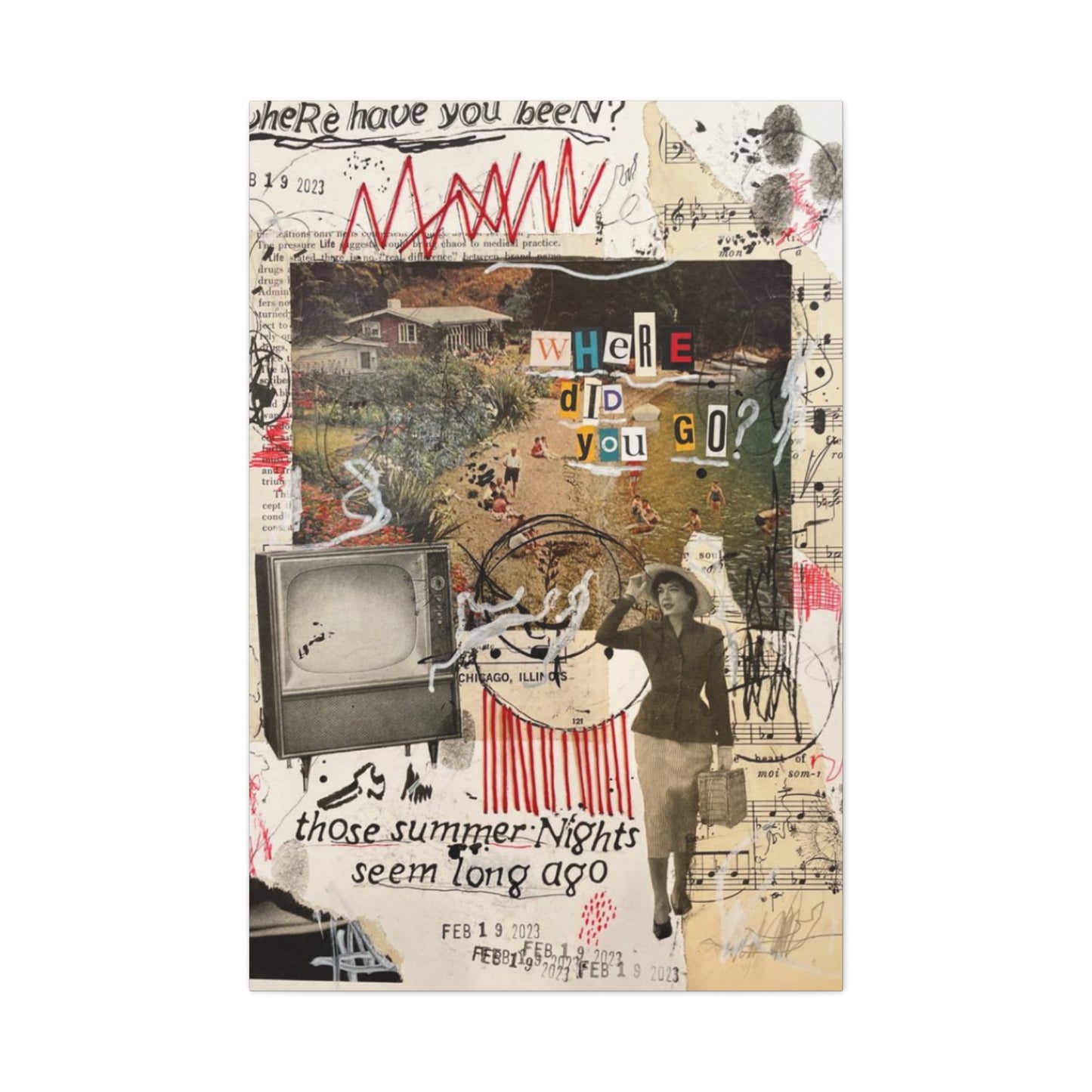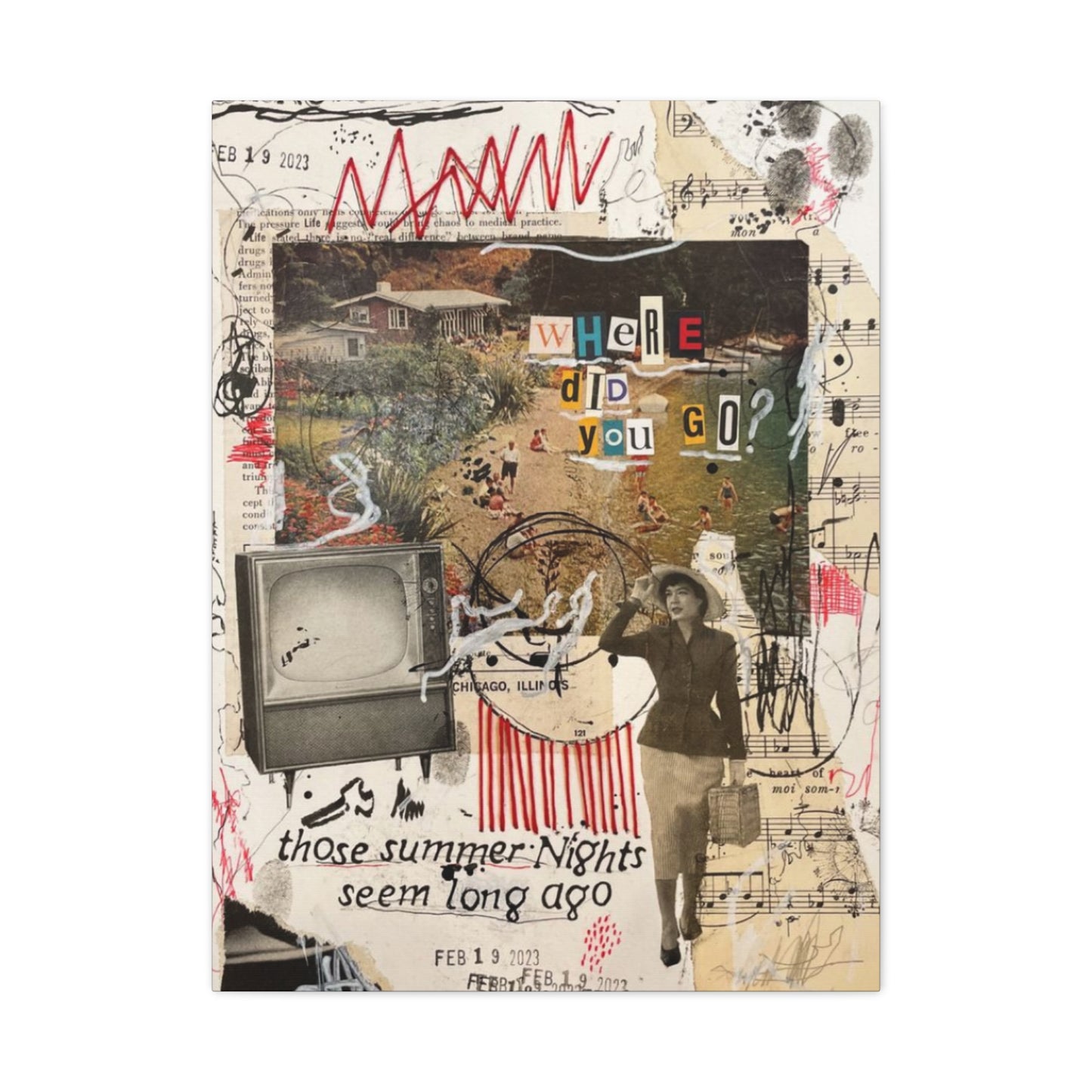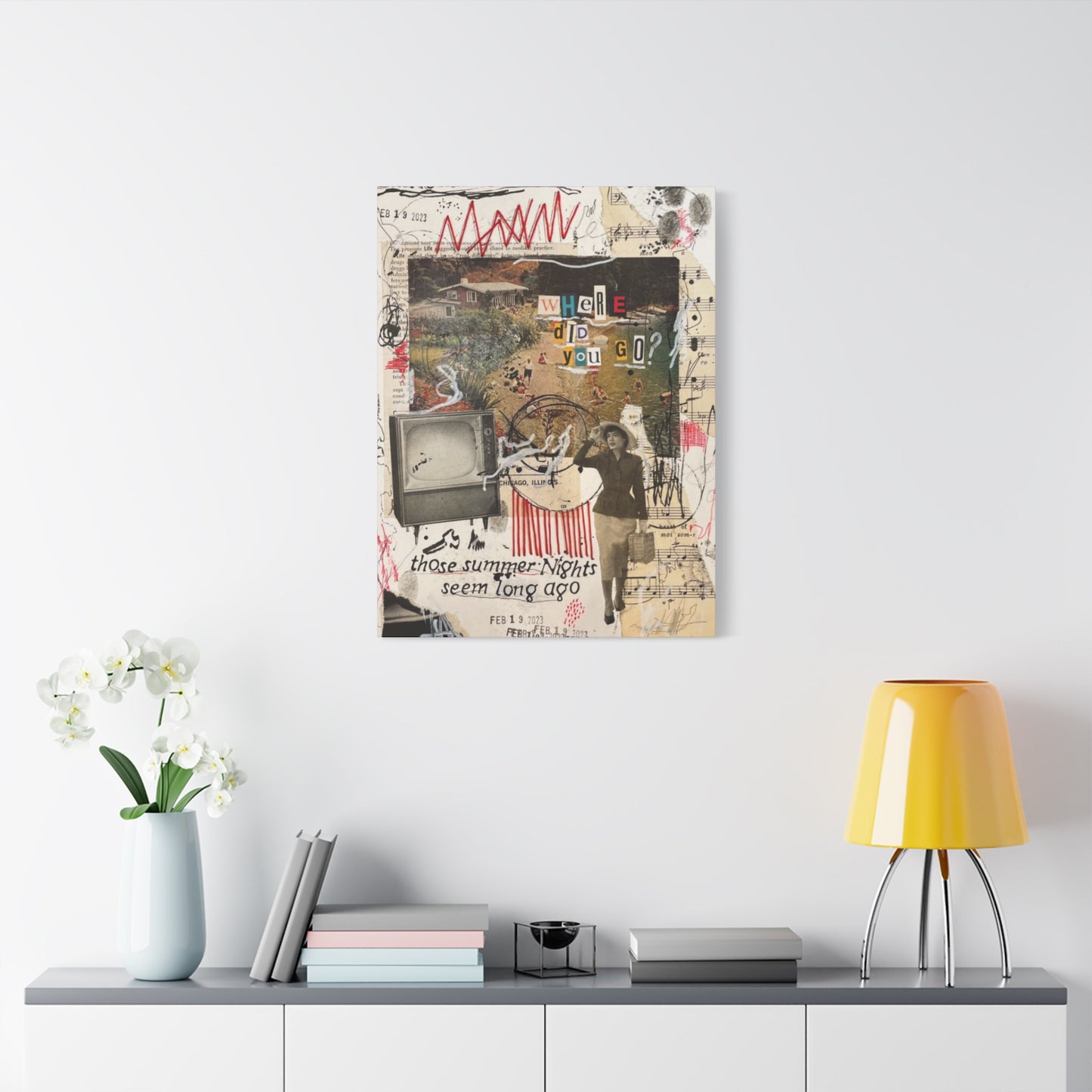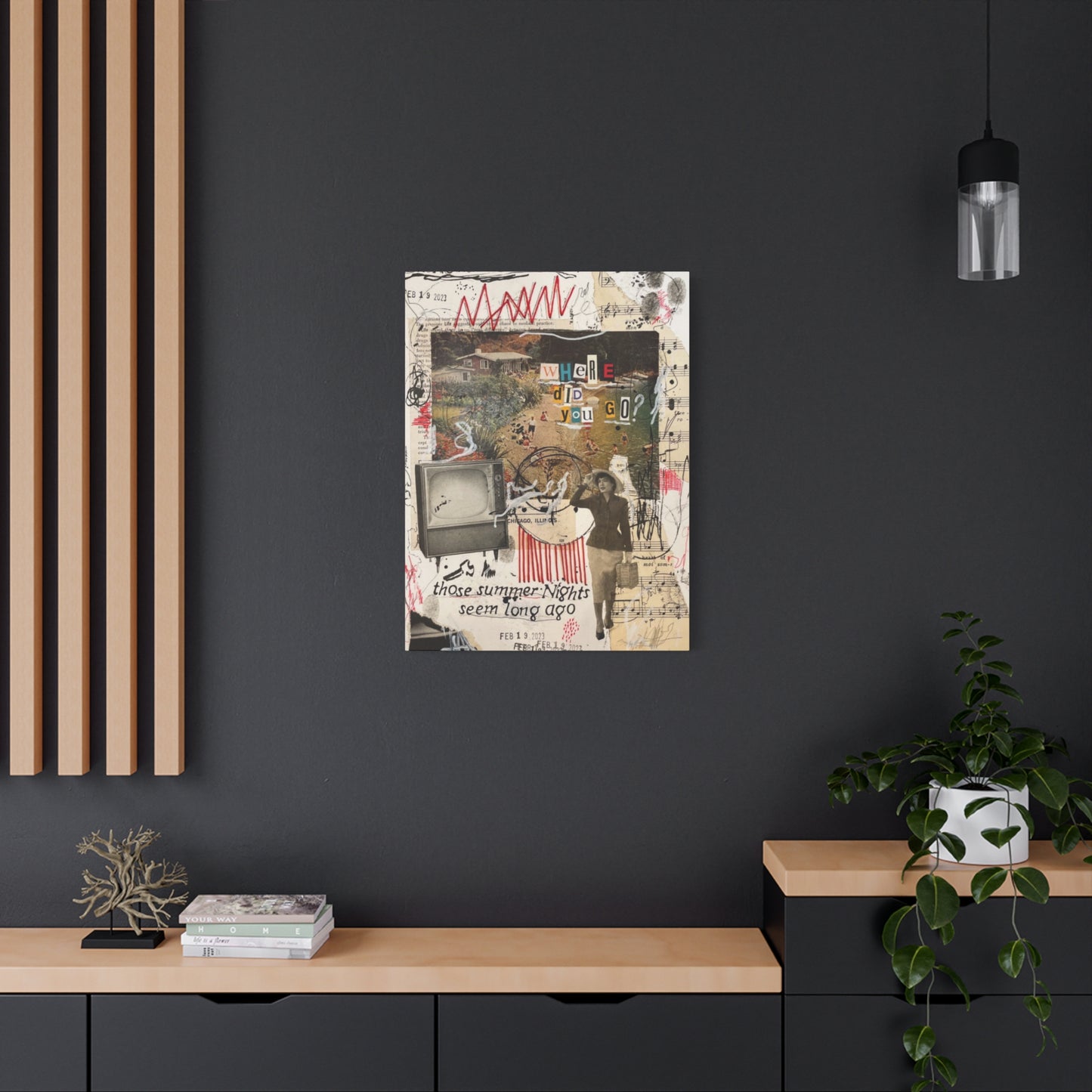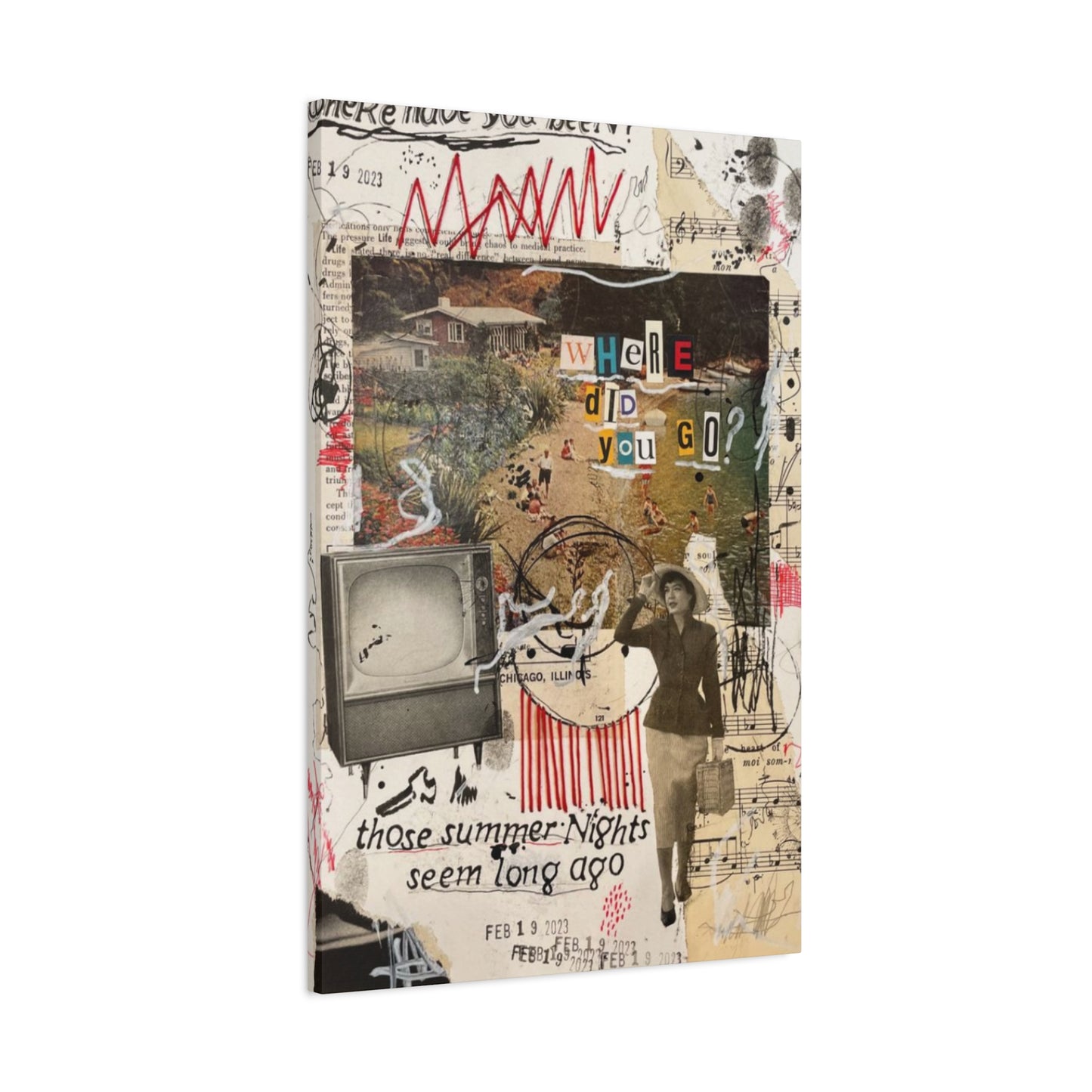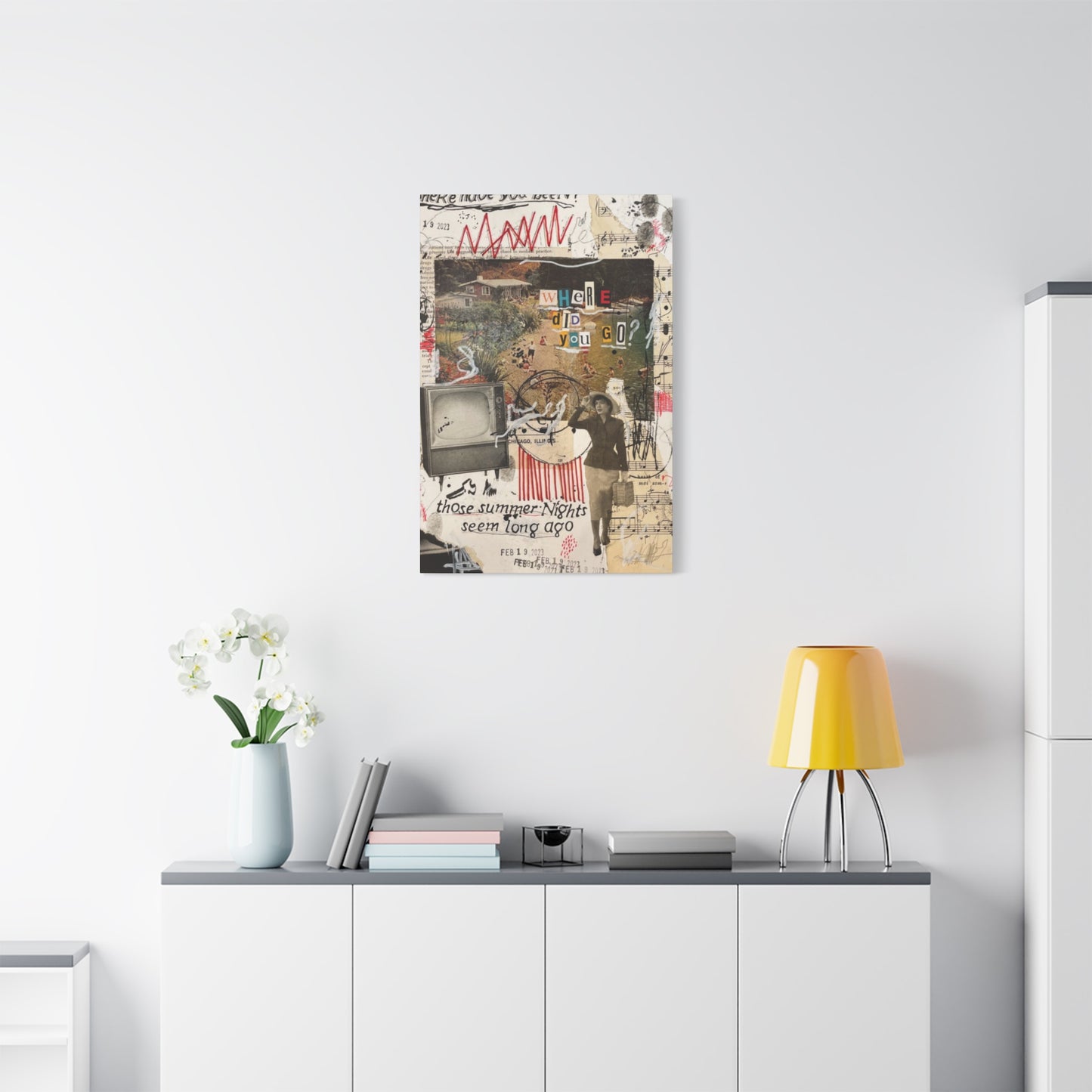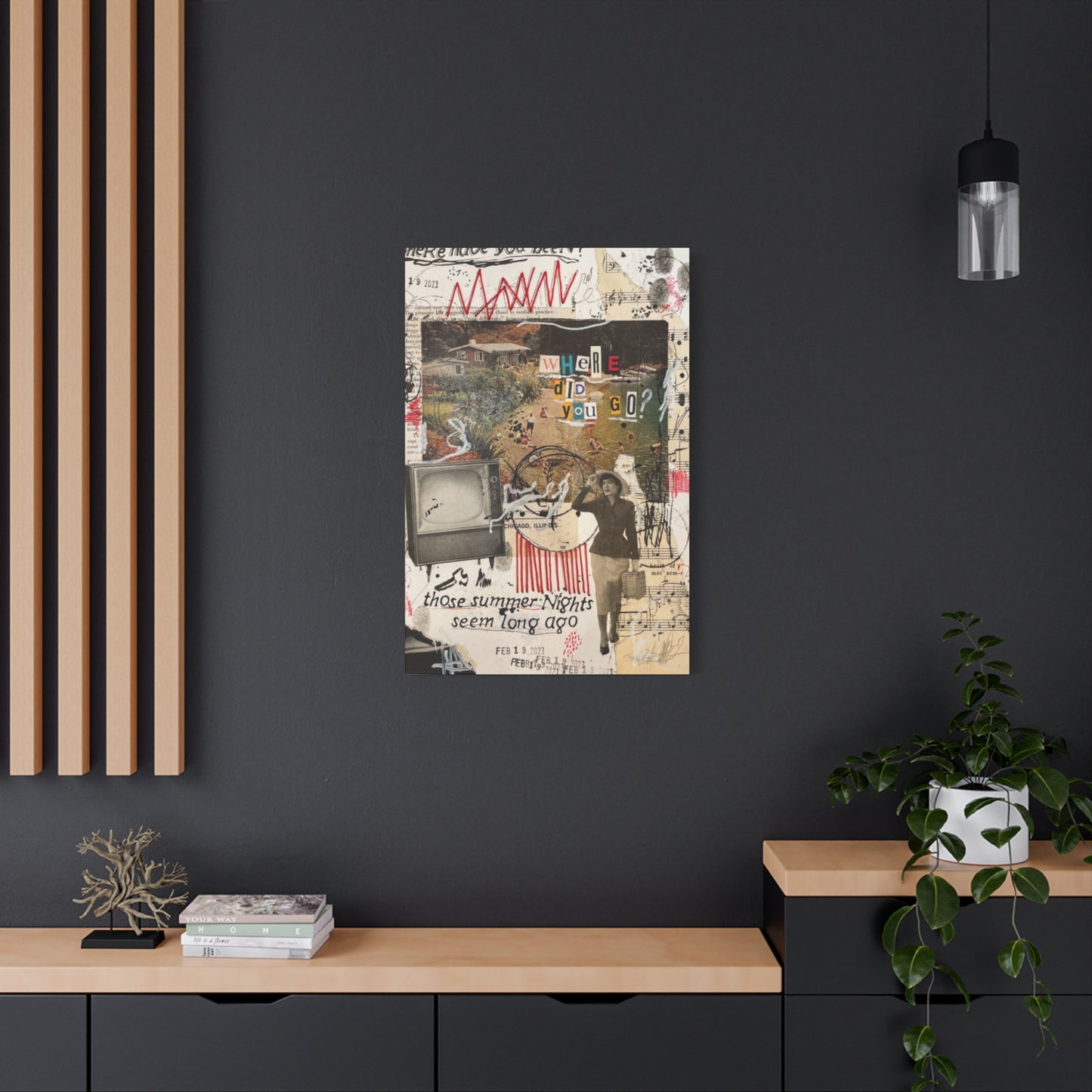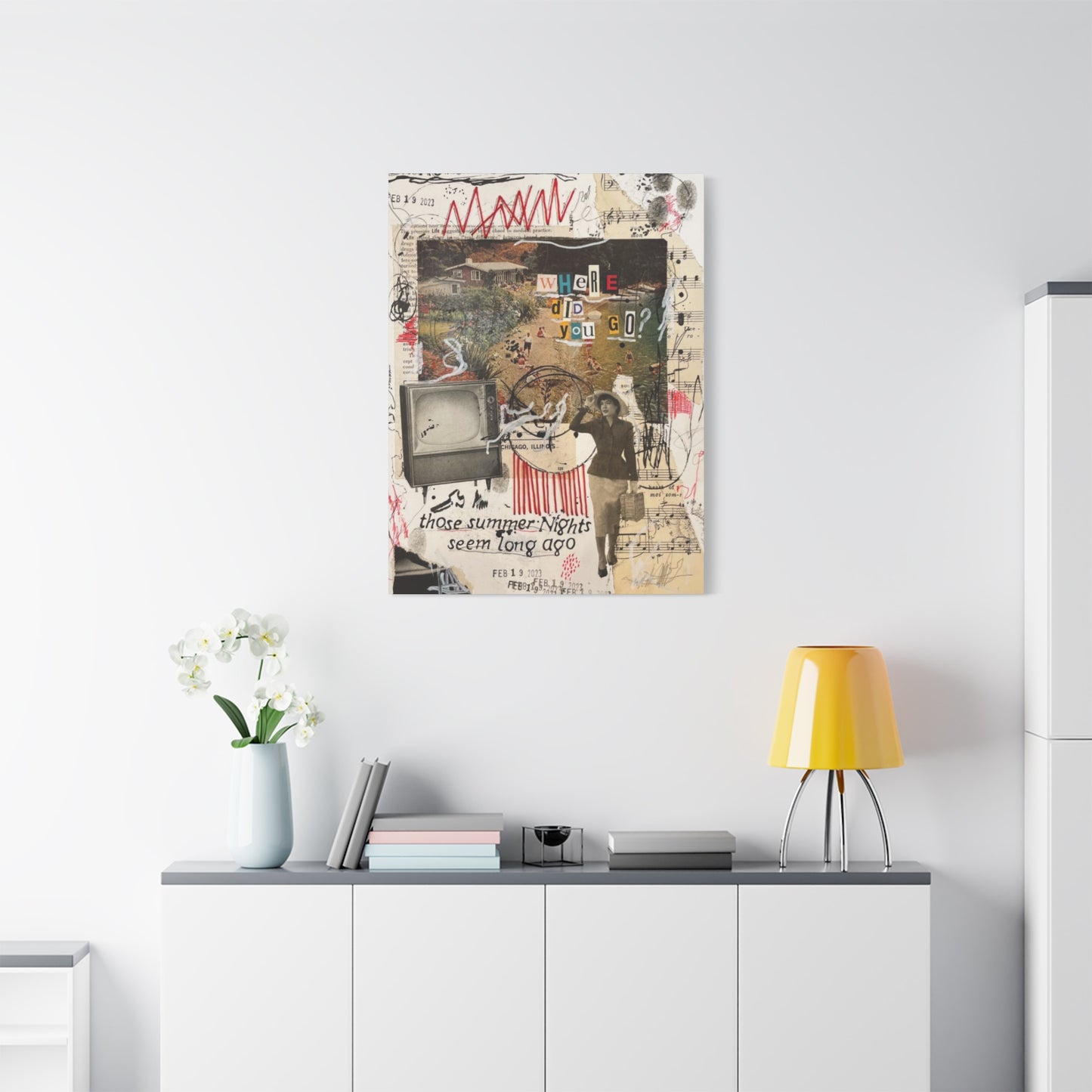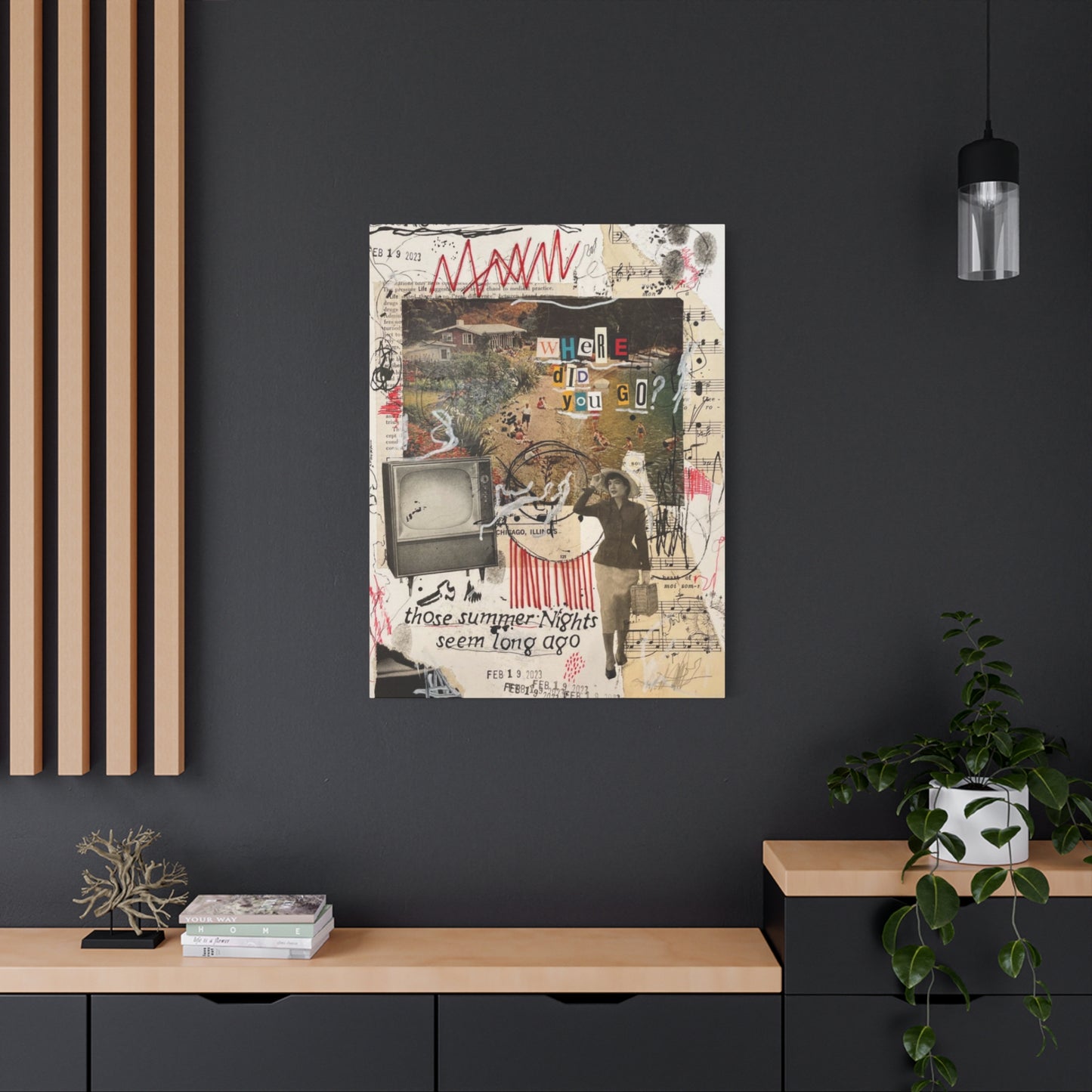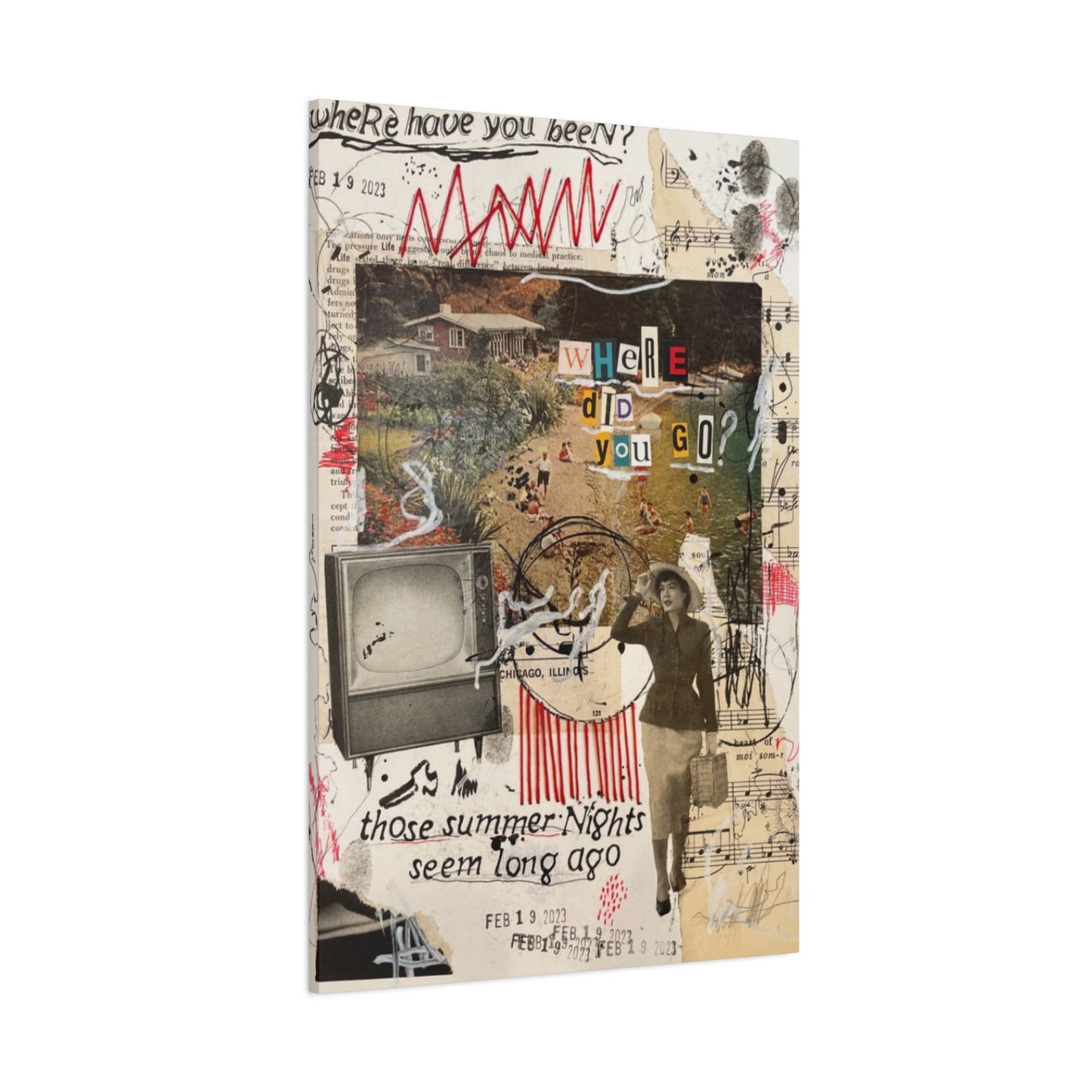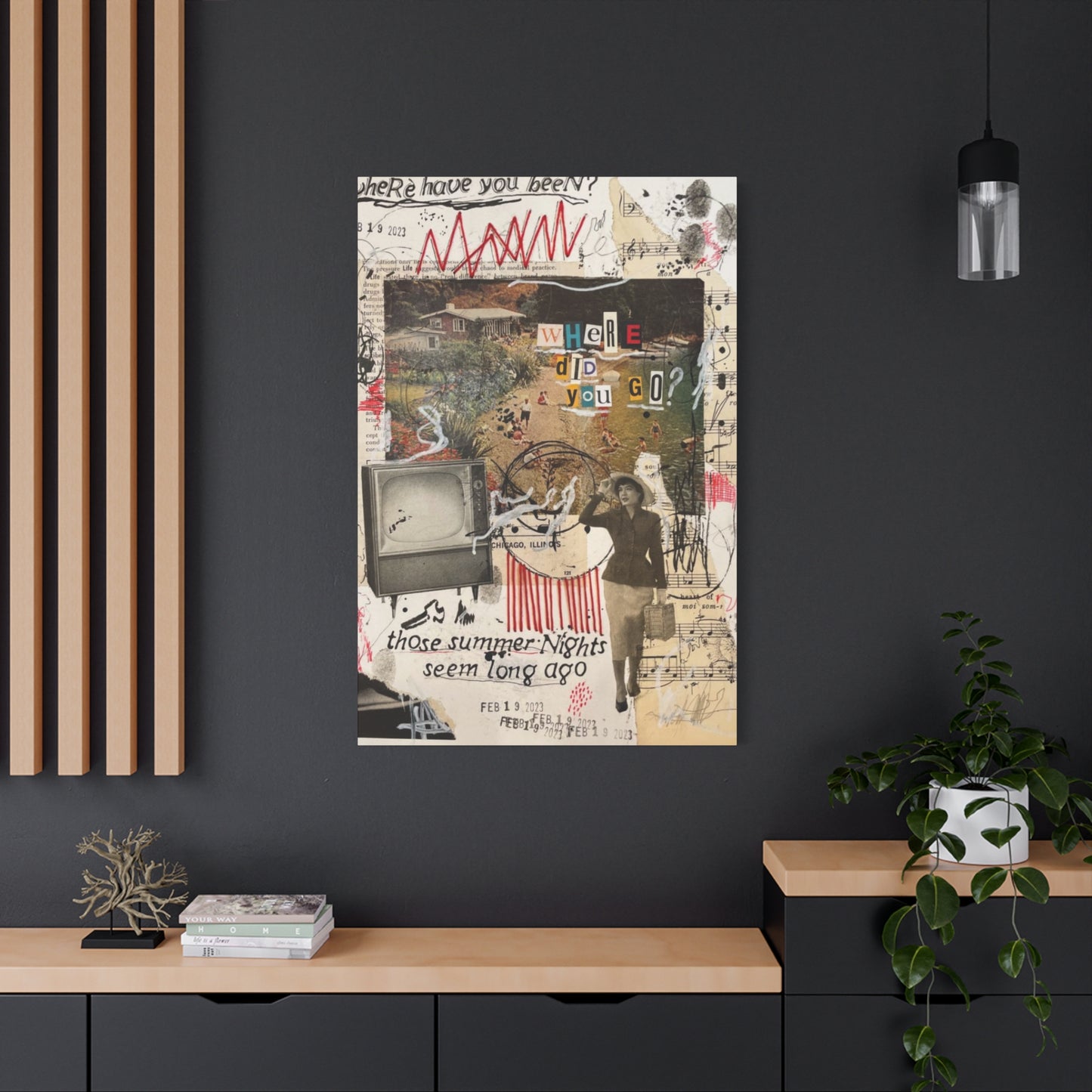Abstract Wall Art Mastery: Modern Canvas and Mixed Media Solutions for Every Interior
Abstract wall art has revolutionized the way we perceive and design interior spaces, offering limitless possibilities for personal expression and aesthetic enhancement. This comprehensive exploration delves into the multifaceted world of abstract canvas prints, mixed media artwork, and contemporary poster designs that have become essential elements in modern interior decoration. From vibrant living room centerpieces to sophisticated office installations, abstract art serves as both a visual anchor and an emotional catalyst within our daily environments.
The evolution of abstract art from traditional gallery spaces to accessible home decor has democratized artistic expression, allowing individuals to curate their personal sanctuaries with pieces that resonate with their unique aesthetic sensibilities. This artistic movement transcends conventional boundaries, embracing bold color palettes, innovative textures, and experimental compositions that challenge traditional decorative norms while offering endless opportunities for creative interpretation.
Abstract Canvas Prints for Creative Spaces
Creative environments demand artwork that stimulates imagination and fosters innovative thinking. Abstract canvas prints serve as powerful catalysts for creativity, offering visual elements that encourage mental exploration and artistic inspiration. These specialized artworks incorporate dynamic color interactions, fluid geometric patterns, and expressive brushwork techniques that create an atmosphere conducive to creative endeavors.
The selection of abstract canvas prints for creative spaces requires careful consideration of color psychology and compositional dynamics. Warm color schemes featuring energetic oranges, passionate reds, and vibrant yellows can stimulate enthusiasm and creative energy, while cooler palettes incorporating calming blues, thoughtful purples, and balanced greens promote focused contemplation and sustained creative work. The interplay between these color relationships creates visual rhythms that support different phases of the creative process.
Texture plays a crucial role in abstract canvas prints designed for creative environments. Heavy impasto techniques, mixed media applications, and layered compositional elements add dimensional depth that engages multiple senses simultaneously. These tactile qualities invite closer inspection and continued discovery, providing ongoing inspiration as creative individuals interact with their workspace environment over extended periods.
The scale and proportion of abstract canvas prints within creative spaces must complement the functional requirements of the environment while maintaining visual impact. Large-format pieces can serve as dramatic focal points that energize expansive studios or collaborative workspaces, while smaller collections of related artworks can create intimate inspiration corners within more compact creative environments. The strategic placement of these artworks at eye level ensures optimal visual engagement during active creative periods.
Contemporary abstract canvas prints often incorporate unconventional materials and experimental techniques that reflect the innovative spirit essential to creative work. Metallic accents, textured mediums, and mixed media applications create visual complexity that mirrors the multifaceted nature of creative thinking. These artistic elements provide continuous visual stimulation that can spark new ideas and creative solutions throughout the working day.
The framing and presentation of abstract canvas prints in creative spaces should enhance rather than distract from their artistic impact. Gallery-style presentations with minimal framing allow the artwork to command attention, while floating mount systems create subtle shadows that add dimensional interest without overwhelming the composition. Professional lighting considerations ensure that color accuracy and textural details remain visible under various working conditions.
Minimalist Wall Art: Abstract Posters
Minimalist design principles have profoundly influenced contemporary abstract poster art, creating sophisticated visual solutions that emphasize simplicity, balance, and intentional space utilization. These carefully curated artworks embrace the philosophy that less can indeed be more, utilizing restrained color palettes, clean geometric forms, and purposeful negative space to create maximum visual impact through minimal elements.
The aesthetic foundation of minimalist abstract posters rests upon the strategic elimination of non-essential visual elements, allowing the remaining components to achieve heightened significance and emotional resonance. This approach requires masterful understanding of compositional balance, where every line, shape, and color choice serves a specific purpose within the overall design framework. The resulting artworks offer viewers moments of visual respite and contemplative engagement.
Color selection in minimalist abstract poster design follows strict disciplinary guidelines that prioritize harmony and intentional contrast over complex chromatic relationships. Monochromatic schemes utilizing varying tones of single colors create subtle depth and sophistication, while limited dual-color combinations can establish dynamic tension without overwhelming the minimalist aesthetic. These restrained palettes allow architectural elements and furnishing details to complement rather than compete with the artwork.
Geometric abstraction forms the backbone of effective minimalist poster design, utilizing fundamental shapes and mathematical relationships to create visually compelling compositions. Simple circles, squares, triangles, and linear elements can be arranged in countless configurations that explore concepts of balance, rhythm, and proportion. These geometric relationships often reflect architectural principles, creating harmonious connections between artwork and interior design elements.
The typography and textual elements within minimalist abstract posters must maintain consistency with the overall design philosophy, utilizing clean sans-serif fonts and strategic text placement that enhances rather than disrupts the visual flow. When incorporating textual elements, designers carefully consider spacing, hierarchy, and alignment to ensure seamless integration with abstract visual components. This thoughtful approach prevents textual elements from overwhelming the carefully orchestrated minimalist composition.
Print quality and material selection significantly impact the final presentation of minimalist abstract posters, where subtle tonal variations and precise color reproduction become critical factors in successful implementation. High-quality printing processes ensure that subtle gradients, precise geometric edges, and carefully calibrated color relationships translate accurately from digital design to physical artwork. Professional mounting and framing options should complement the minimalist aesthetic through clean lines and neutral materials.
Contemporary Canvas Prints for Modern Decor
Modern interior design embraces contemporary canvas prints as essential elements that bridge the gap between artistic expression and functional decoration. These sophisticated artworks incorporate current design trends, innovative printing technologies, and cutting-edge artistic techniques to create visually stunning pieces that enhance contemporary living environments while reflecting current aesthetic sensibilities and cultural influences.
The contemporary canvas print market offers unprecedented variety in artistic styles, subject matter, and presentation formats that cater to diverse modern design preferences. From abstract expressionist influences to digital art innovations, these artworks encompass traditional artistic techniques adapted for contemporary printing processes alongside entirely new artistic approaches developed specifically for canvas printing applications. This diversity ensures compatibility with various modern interior design schemes.
Color trends in contemporary canvas prints reflect current design movements and cultural influences, incorporating both bold statement palettes and sophisticated neutral schemes that complement modern furnishing selections. Trending color combinations often draw inspiration from fashion, technology, and global cultural exchanges, creating artwork that feels current and relevant within contemporary design contexts. These color choices must balance trendy appeal with long-term design compatibility.
The technical advancement of canvas printing processes has revolutionized the quality and durability of contemporary artwork reproductions, allowing for precise color reproduction, fine detail preservation, and extended longevity that rivals traditional artistic methods. Modern printing techniques utilize archival inks, premium canvas materials, and protective coatings that ensure color stability and resistance to environmental factors. These technological improvements have elevated canvas prints to museum-quality standards.
Scale considerations for contemporary canvas prints in modern decor must account for both architectural proportions and lifestyle requirements. Open-concept living spaces can accommodate large-scale statement pieces that serve as room dividers or focal points, while smaller residential environments benefit from carefully proportioned artwork that enhances without overwhelming available space. The relationship between artwork dimensions and room scale directly impacts the overall design success.
Installation and lighting considerations for contemporary canvas prints require professional attention to mounting systems, wall preparation, and illumination design. Proper installation ensures artwork security while maintaining clean presentation lines essential to modern aesthetic principles. Strategic lighting placement enhances color vibrancy and textural details while preventing glare and UV damage that could compromise long-term artwork integrity.
Mixed Media Abstract Wall Art for Bedrooms
Bedroom environments require abstract wall art that promotes relaxation, personal reflection, and emotional well-being while maintaining aesthetic appeal and design sophistication. Mixed media abstract artwork offers unique advantages for bedroom applications, combining various artistic materials and techniques to create multi-dimensional pieces that provide visual interest without overwhelming the peaceful atmosphere essential to restful sleep environments.
The psychological impact of mixed media abstract wall art in bedrooms extends beyond mere decoration, influencing mood, sleep quality, and overall emotional wellness through careful color selection and compositional design. Soft, muted color palettes featuring gentle blues, warm earth tones, and subtle neutrals create calming visual environments that support relaxation and stress reduction. The layered textures inherent in mixed media applications add subtle visual complexity that encourages contemplation without overstimulation.
Material selection for mixed media bedroom artwork must consider both aesthetic appeal and practical considerations such as dust accumulation, cleaning requirements, and potential allergen concerns. Natural materials including handmade papers, organic textiles, and mineral pigments create healthier indoor air quality while providing authentic textural experiences. These materials often age gracefully, developing subtle patina changes that add character and personal history to the artwork over time.
The scale and placement of mixed media abstract wall art within bedroom environments requires sensitivity to the intimate nature of these personal spaces. Artwork positioned at eye level when seated on the bed provides optimal viewing angles for relaxation periods, while pieces placed opposite sleeping areas can serve as focal points during waking moments. The relationship between artwork scale and room proportions must maintain visual balance without creating overwhelming presence.
Lighting considerations for bedroom mixed media artwork must balance artistic presentation with practical functionality and sleep-friendly illumination levels. Adjustable lighting systems allow for artwork appreciation during active periods while maintaining low-light options suitable for bedtime routines. The textural elements within mixed media pieces respond beautifully to varied lighting conditions, creating dynamic visual experiences throughout daily cycles.
The personal significance of bedroom artwork makes custom commissioning and personal collection curation particularly important considerations. Mixed media abstract pieces can incorporate meaningful materials, color preferences, and symbolic elements that reflect individual personalities and life experiences. This personalization creates deeper emotional connections between residents and their bedroom environments, enhancing the space's role as a personal sanctuary.
Vibrant Abstract Canvas for Living Rooms
Living room environments serve as social gathering spaces that require artwork capable of creating welcoming atmospheres while stimulating conversation and shared experiences. Vibrant abstract canvas artwork provides the perfect solution for these dynamic spaces, offering bold color combinations, energetic compositions, and engaging visual elements that enhance social interactions while reflecting the homeowners' personality and aesthetic preferences.
The strategic selection of vibrant abstract canvas artwork for living rooms must consider the space's multiple functions and varying lighting conditions throughout the day. These artworks should maintain visual appeal during both intimate family gatherings and larger social events, providing appropriate focal points that enhance rather than compete with social activities. The energy level of the artwork should complement the intended atmosphere for different types of gatherings.
Color psychology plays a crucial role in vibrant living room artwork selection, where bold hues can influence mood, energy levels, and social dynamics. Warm color palettes featuring rich reds, golden yellows, and vibrant oranges create welcoming, energetic environments that encourage lively conversation and social engagement. These colors can stimulate appetite and social bonding, making them particularly suitable for living spaces connected to dining areas.
The compositional structure of vibrant abstract canvas pieces must maintain visual balance despite bold color choices and dynamic elements. Professional artists achieve this balance through careful attention to proportion, rhythm, and visual weight distribution within the composition. Successful vibrant abstractions create focal points that draw attention without causing visual fatigue, allowing viewers to appreciate the artwork during extended exposure periods typical of living room environments.
Scale considerations for living room vibrant abstract canvas artwork must account for furniture arrangements, traffic patterns, and viewing distances from various seating positions. Large-scale pieces can serve as dramatic backdrops for seating arrangements, while groupings of smaller related works can create gallery-style displays that add visual interest without overwhelming available wall space. The relationship between artwork and furniture proportions directly impacts the overall design harmony.
The durability and maintenance requirements of vibrant abstract canvas artwork in high-traffic living spaces require careful consideration of materials and protective treatments. UV-resistant inks and protective varnishes help maintain color vibrancy despite exposure to natural and artificial lighting. Regular maintenance schedules ensure that these investment pieces retain their visual impact and emotional resonance throughout years of enjoyment.
Eye-Catching Abstract Posters for Offices
Professional office environments demand artwork that balances aesthetic appeal with productivity enhancement and brand representation. Eye-catching abstract posters provide cost-effective solutions for creating visually engaging workspaces that inspire employee creativity, reduce stress, and communicate company values through thoughtful artistic selection. These artworks must function effectively within the unique constraints and requirements of professional environments.
The psychological benefits of abstract artwork in office settings include stress reduction, creativity stimulation, and improved overall workplace satisfaction. Carefully selected abstract posters can transform sterile corporate environments into inspiring spaces that support employee well-being and professional performance. The non-representational nature of abstract art allows for personal interpretation, creating inclusive environments that resonate with diverse workforce populations.
Color selection for office abstract posters must consider the specific functions of different workspace areas while maintaining consistency with overall corporate branding and design schemes. Energizing colors in collaborative spaces can stimulate creative thinking and team interaction, while calming palettes in individual work areas support concentration and sustained focus. The integration of brand colors within abstract compositions creates subtle corporate identity reinforcement.
The professional presentation of abstract posters in office environments requires attention to framing, mounting, and installation details that reflect corporate quality standards. High-quality printing processes, archival materials, and professional framing ensure that artwork maintains its appearance despite commercial use conditions. Standardized presentation formats across multiple office locations create cohesive brand experiences while allowing for local customization.
Budget considerations for office abstract poster programs must balance aesthetic impact with cost-effectiveness, particularly when outfitting multiple locations or large corporate campuses. Digital printing technologies allow for economical reproduction of high-quality artwork, while standardized sizing and framing systems create economies of scale for large installations. Strategic artwork placement maximizes visual impact within available budget parameters.
The flexibility and updateability of abstract poster programs allow for seasonal changes, campaign support, and evolving corporate needs. Unlike permanent artwork installations, poster programs can be easily modified to reflect changing company directions, celebrate achievements, or support specific initiatives. This adaptability makes abstract posters particularly valuable for dynamic corporate environments.
Modern Abstract Wall Decor for Any Room
The versatility of modern abstract wall decor makes it suitable for virtually any interior space, from residential bedrooms and living areas to commercial offices and hospitality environments. This adaptability stems from the universal appeal of abstract artistic elements that transcend specific decorative styles while offering endless possibilities for customization and personal interpretation. Understanding how to select and implement abstract wall decor across diverse environments requires appreciation for both artistic principles and practical design considerations.
The foundational principles of modern abstract wall decor emphasize the importance of visual balance, color harmony, and scale relationships that work effectively across different room types and functions. These artworks should enhance the existing architectural features while creating focal points that support the intended use of each space. The non-representational nature of abstract art allows for flexible interpretation that can adapt to changing functional requirements and personal preferences.
Material selection for versatile abstract wall decor must consider the varying environmental conditions and maintenance requirements across different room types. Moisture-resistant materials work well in bathrooms and kitchens, while fade-resistant inks ensure longevity in sun-exposed rooms. The durability requirements for high-traffic commercial spaces differ significantly from those needed for residential applications, requiring careful material specification for each intended use.
The installation and mounting systems for modern abstract wall decor should accommodate the structural limitations and aesthetic requirements of different wall types and room configurations. Professional installation techniques ensure artwork security while maintaining clean presentation lines essential to modern design principles. Flexible mounting systems allow for easy repositioning and updates as room functions or design preferences evolve over time.
Lighting integration for modern abstract wall decor must consider both the artistic presentation needs and the functional lighting requirements of each specific room type. Accent lighting can dramatically enhance textural elements and color vibrancy in abstract pieces, while integrated lighting systems can serve dual purposes of artwork illumination and general room lighting. The relationship between natural and artificial lighting affects color perception and artwork longevity.
The economic considerations for implementing modern abstract wall decor across multiple rooms or commercial spaces require strategic planning and budget allocation. Standardized sizing and presentation formats can create economies of scale while maintaining design consistency. The long-term value of quality abstract artwork includes both aesthetic benefits and potential appreciation in value, making it a sound investment for both residential and commercial applications.
Bold Canvas Prints of Abstract Art
Bold abstract canvas prints command attention through dramatic color combinations, dynamic compositional elements, and powerful visual statements that transform ordinary spaces into extraordinary environments. These commanding artworks require careful consideration of placement, scale, and supporting design elements to ensure their dramatic impact enhances rather than overwhelms the intended space. The successful integration of bold abstract canvas prints demands understanding of both artistic principles and interior design dynamics.
The creation of truly bold abstract canvas prints involves pushing the boundaries of color saturation, compositional drama, and scale relationships to achieve maximum visual impact. Artists working in this genre often employ high-contrast color combinations, energetic brushwork, and experimental techniques that create artwork with undeniable presence. The printing process must accurately reproduce these intense artistic elements while maintaining long-term color stability and image clarity.
Color theory plays a critical role in the success of bold abstract canvas prints, where complementary color relationships, high saturation levels, and strategic contrast placement create visual excitement and emotional engagement. The psychological impact of bold colors can influence mood, energy levels, and behavioral responses, making thoughtful color selection essential for achieving desired environmental effects. These powerful color relationships must be balanced with compositional elements that prevent visual chaos.
The architectural integration of bold abstract canvas prints requires careful consideration of room proportions, existing color schemes, and lighting conditions. Large-scale bold pieces work best in spacious environments with high ceilings and minimal competing visual elements, while smaller bold works can create dramatic accent points in more intimate settings. The relationship between bold artwork and surrounding neutral elements creates visual breathing space that prevents sensory overload.
Supporting design elements around bold abstract canvas prints should complement rather than compete with the artwork's dramatic presence. Neutral color palettes in furniture and accessories allow bold artwork to serve as the primary focal point, while strategic lighting placement can enhance the artwork's impact during different times of day. The careful curation of supporting elements ensures that bold abstract pieces achieve their intended dramatic effect.
The long-term living experience with bold abstract canvas prints requires consideration of how these powerful visual statements will affect daily life over extended periods. While initially exciting, overly bold artwork can become visually fatiguing if not properly balanced with calming elements. Strategic placement in social areas rather than private spaces often provides the best long-term satisfaction with bold abstract artwork choices.
Abstract Posters for Stylish Interiors
Stylish interior design increasingly relies on carefully curated abstract posters that provide affordable access to sophisticated artistic elements without the investment required for original artwork or large-scale installations. These versatile decorative solutions offer endless possibilities for creating personalized aesthetic expressions while maintaining the flexibility to adapt to evolving design preferences and lifestyle changes. The strategic selection and presentation of abstract posters can elevate ordinary spaces into stylish environments that reflect current design trends and personal artistic sensibilities.
The contemporary poster market offers unprecedented variety in abstract artistic styles, from digitally created compositions to reproductions of traditional artistic techniques adapted for modern printing processes. This diversity allows interior designers and homeowners to select pieces that perfectly complement existing design schemes while introducing artistic elements that enhance overall aesthetic sophistication. The accessibility of high-quality abstract posters has democratized interior design, making stylish artistic decoration available to broader audiences.
The integration of abstract posters within stylish interiors requires understanding of current design trends, color psychology, and compositional principles that create harmonious relationships between artwork and surrounding elements. Modern design movements emphasize the importance of curated collections that tell cohesive visual stories while allowing individual pieces to contribute unique character to the overall design narrative. This approach transforms poster collections from simple decoration into intentional artistic statements.
Framing and presentation techniques for abstract posters in stylish interiors must balance protection requirements with aesthetic considerations that enhance rather than detract from the artwork's visual impact. Contemporary framing options range from sleek metal frames that emphasize modern sensibilities to natural wood options that add warmth and texture to abstract compositions. The consistency of framing choices throughout a collection creates professional presentation quality while allowing individual artworks to shine.
The strategic placement of abstract posters within stylish interiors considers sight lines, lighting conditions, and functional requirements that ensure optimal viewing experiences while supporting the intended use of each space. Gallery wall arrangements allow for creative groupings that combine multiple related pieces, while individual statement pieces can serve as focal points that anchor entire room designs. The relationship between poster placement and furniture arrangements affects both aesthetic impact and practical functionality.
The updating and rotation potential of abstract poster collections provides ongoing opportunities for refreshing stylish interiors without major renovation investments. Seasonal changes, personal growth, and evolving design preferences can be easily accommodated through poster substitution or rearrangement. This flexibility makes abstract posters particularly valuable for individuals who enjoy experimenting with different aesthetic approaches while maintaining overall design sophistication.
Contemporary Mixed Media Art for Home
The integration of contemporary mixed media art within residential environments offers unique opportunities for creating personalized spaces that reflect individual artistic sensibilities while incorporating innovative materials and techniques that push the boundaries of traditional home decoration. These sophisticated artworks combine multiple artistic mediums to create rich, textural experiences that engage viewers on multiple sensory levels while providing lasting aesthetic value and emotional connection within intimate living spaces.
Contemporary mixed media artists embrace experimental approaches that incorporate traditional artistic materials alongside unconventional elements such as digital components, recycled materials, and industrial supplies. This innovative fusion creates artwork that feels both timeless and cutting-edge, offering visual complexity that rewards extended viewing while maintaining relevance within evolving design contexts. The incorporation of mixed media pieces within home environments requires appreciation for both artistic innovation and practical living considerations.
The textural richness inherent in mixed media artwork provides unique advantages for residential applications, where tactile elements can create intimate viewing experiences that traditional flat artworks cannot achieve. These dimensional qualities add depth and visual interest to living spaces while creating conversation pieces that engage visitors and reflect the homeowners' appreciation for artistic innovation. The interplay of different materials within single compositions creates ever-changing visual experiences under varying lighting conditions.
Color integration within contemporary mixed media home art must consider the complex relationships between different material surfaces and their varied responses to light and environmental conditions. Natural materials may age and patina over time, creating evolving color relationships that add character and personal history to the artwork. Synthetic materials often maintain consistent appearance but may offer unique reflective or translucent qualities that create dynamic visual effects throughout daily lighting cycles.
The scale and placement considerations for mixed media artwork in home environments must account for both the dimensional nature of these pieces and their potential for creating dramatic focal points within residential spaces. Three-dimensional elements may require additional clearance from walls and furniture, while the visual weight of complex mixed media compositions can dominate smaller spaces if not carefully proportioned to room dimensions. Strategic placement ensures optimal viewing while maintaining functional space requirements.
The maintenance and care requirements for contemporary mixed media artwork in home environments vary significantly based on the specific materials incorporated within each piece. Some materials may require special cleaning techniques or environmental controls to prevent deterioration, while others develop appealing patina over time with minimal maintenance. Understanding these requirements before acquisition ensures long-term satisfaction with mixed media art investments.
Abstract Wall Art That Inspires Creativity
The specific application of abstract wall art within creative environments requires understanding of how visual elements can stimulate imaginative thinking, support sustained creative work, and provide ongoing inspiration throughout extended periods of artistic or professional endeavor. These specialized artworks serve as more than mere decoration, functioning as catalysts for creative thinking and visual references that can influence and enhance the creative output of individuals working within these inspired spaces.
The psychological mechanisms through which abstract wall art influences creativity include visual stimulation, emotional engagement, and subconscious pattern recognition that can spark new ideas and creative solutions. The non-representational nature of abstract art allows viewers to project their own interpretations and associations, creating personalized sources of inspiration that evolve with changing creative needs and developmental stages. This flexible interpretive quality makes abstract art particularly valuable for creative environments.
Color selection for creativity-inspiring abstract wall art should consider the specific phases of creative work and the varying emotional states that support different types of creative activity. Energizing colors can stimulate initial brainstorming and experimental phases, while calming colors support focused development and refinement work. The strategic use of color transitions within abstract compositions can mirror the creative process itself, providing visual metaphors for creative development and completion cycles.
The compositional elements within creativity-inspiring abstract artwork should include visual rhythms, dynamic tensions, and resolution patterns that reflect the creative process while providing aesthetic satisfaction. These elements can serve as visual exercises in problem-solving, composition, and aesthetic decision-making that support creative skill development through regular observation and contemplation. The artwork becomes an ongoing source of artistic education as well as inspiration.
The placement and lighting of abstract wall art within creative spaces must optimize viewing conditions during different phases of creative work while providing visual breaks that prevent mental fatigue. Strategic placement at eye level during standing and seated work positions ensures optimal engagement, while variable lighting systems allow for different viewing experiences that can stimulate various types of creative thinking. The relationship between artwork and work surfaces affects both practical functionality and creative inspiration.
The evolution and updating of abstract art collections within creative spaces should reflect the changing needs and developmental progression of creative individuals or teams. Regular rotation or addition of new pieces prevents visual habituation while providing fresh sources of inspiration. The curation process itself becomes part of the creative practice, as individuals develop aesthetic discrimination and personal artistic preferences through ongoing art selection and evaluation.
Modern Canvas Posters for Living Spaces
The contemporary application of canvas poster technology has revolutionized the accessibility and quality of artistic decoration for modern living spaces, offering gallery-quality reproductions and original digital artwork at price points that make sophisticated artistic decoration available to broader audiences. These modern printing techniques combine the aesthetic appeal of traditional canvas artwork with the flexibility and affordability of poster production, creating hybrid solutions that meet current lifestyle needs and design preferences.
The technical advancement of canvas poster printing has achieved remarkable improvements in color accuracy, detail reproduction, and durability that rival traditional artistic methods while offering advantages in consistency, customization, and replacement capability. Modern printing processes utilize archival inks and museum-quality canvas materials that ensure longevity and color stability comparable to original artwork. These technological improvements have elevated canvas posters to legitimate decorative options for discerning interior designers and homeowners.
The design flexibility offered by modern canvas poster production allows for custom sizing, color adjustments, and personalization options that accommodate specific living space requirements and individual preferences. This customization capability enables perfect integration with existing color schemes, furniture proportions, and architectural features while maintaining artistic integrity and visual appeal. The ability to modify standard designs creates unique decorative solutions tailored to specific environments.
The installation and presentation options for modern canvas posters in living spaces include traditional framing, contemporary floating mount systems, and direct mounting techniques that offer varying aesthetic effects and budget considerations. The lightweight nature of canvas poster materials simplifies installation while reducing wall stress and hardware requirements. Professional presentation techniques ensure that canvas posters achieve visual impact comparable to more expensive artwork options.
The replacement and updating potential of modern canvas poster collections provides ongoing opportunities for refreshing living space aesthetics without major investment or installation complexity. Seasonal changes, design evolution, and personal growth can be easily accommodated through poster replacement or supplementation. This flexibility makes canvas posters particularly valuable for individuals who enjoy experimenting with different aesthetic approaches or who anticipate lifestyle changes.
The environmental considerations of modern canvas poster production include sustainable material options, responsible printing practices, and end-of-life recycling possibilities that appeal to environmentally conscious consumers. Many producers now offer eco-friendly substrate options and water-based inks that reduce environmental impact while maintaining quality standards. The longer lifespan of quality canvas posters compared to traditional paper posters also contributes to reduced waste generation.
Mixed Media Prints to Transform Your Walls
The transformative potential of mixed media prints lies in their ability to create dramatic visual change within existing spaces while incorporating multiple artistic techniques and materials that provide rich, complex viewing experiences. These innovative artworks combine digital printing technologies with traditional artistic elements to create pieces that offer both immediate visual impact and sustained interest through detailed exploration of their complex compositional elements and material relationships.
The production techniques for mixed media prints involve sophisticated combinations of digital printing, hand-applied elements, and finishing processes that create unique artworks while maintaining the reproducibility advantages of print production. These hybrid approaches allow artists to achieve the complexity and texture associated with original mixed media artwork while offering the consistency and affordability that make such pieces accessible for broader decorative applications. The resulting prints combine artistic innovation with practical functionality.
The visual complexity inherent in mixed media prints provides multiple layers of engagement that reward both casual viewing and detailed examination, making them particularly effective for spaces where extended viewing occurs. The interplay between printed elements and applied materials creates depth and visual interest that changes under different lighting conditions throughout the day. This dynamic quality ensures that mixed media prints continue to provide visual discovery and enjoyment over extended periods.
The material selection for mixed media print production must balance aesthetic goals with practical considerations including durability, maintenance requirements, and environmental stability within residential and commercial settings. The combination of different materials within single artworks requires careful consideration of expansion rates, chemical compatibility, and aging characteristics to ensure long-term stability and appearance retention. Professional production techniques address these technical challenges while maintaining artistic integrity.
The integration of mixed media prints within existing interior design schemes requires consideration of both the visual impact of complex artworks and their relationship to surrounding decorative elements. The rich visual texture of mixed media prints can serve as focal points that anchor entire room designs, while their material complexity may require simplified surrounding elements to prevent visual competition. Strategic placement and supporting design choices ensure optimal presentation of these sophisticated artworks.
The custom creation potential of mixed media prints allows for personalized artwork that incorporates specific color preferences, meaningful materials, and individual aesthetic sensibilities while maintaining professional production quality. This customization capability enables the creation of unique decorative solutions that reflect personal history, cultural background, or specific environmental requirements. The combination of artistic expertise with individual input creates truly personalized artistic statements.
Abstract Poster Art for Modern Interiors
Modern interior design increasingly emphasizes the importance of carefully curated poster art that contributes to sophisticated aesthetic environments while maintaining the flexibility and accessibility that contemporary lifestyles demand. Abstract poster art provides ideal solutions for modern interiors through its ability to complement minimalist design principles, contribute to color scheme development, and provide artistic focal points without overwhelming clean, contemporary design schemes.
The design principles underlying successful abstract poster art for modern interiors emphasize clarity, balance, and intentional simplicity that align with contemporary aesthetic values. These artworks avoid unnecessary complexity while maintaining visual interest through sophisticated use of color, form, and compositional relationships. The resulting pieces provide artistic sophistication while supporting the clean, uncluttered appearance essential to modern interior design approaches.
The color relationships within abstract poster art for modern interiors must consider current design trends while maintaining sufficient flexibility to accommodate evolving aesthetic preferences and changing decorative contexts. Contemporary color palettes often emphasize subtle variations within limited color ranges, creating sophisticated tonal relationships that provide visual interest without competing with architectural elements or furniture selections. These restrained approaches ensure long-term compatibility with changing interior design trends.
The scale and proportion considerations for abstract poster art in modern interiors must account for the clean lines and open spaces that characterize contemporary design while providing appropriate visual weight to prevent the artwork from appearing insignificant within minimalist contexts. Strategic sizing ensures that abstract posters contribute meaningfully to interior compositions without overwhelming the refined aesthetic balance essential to modern design success. The relationship between artwork dimensions and architectural proportions directly impacts overall design harmony.
The presentation and framing options for abstract poster art in modern interiors should emphasize clean lines, neutral materials, and precise installation that reflects contemporary quality standards and aesthetic preferences. Modern framing choices often utilize slim profiles, neutral colors, and high-quality materials that enhance rather than compete with the artwork itself. Professional installation techniques ensure clean presentation lines that maintain the sophisticated appearance essential to modern interior design.
The collection and curation strategies for abstract poster art in modern interiors involve thoughtful selection of pieces that create cohesive visual narratives while allowing individual artworks to contribute unique character to the overall design scheme. Modern curation approaches often emphasize quality over quantity, selecting fewer pieces with greater individual impact rather than creating busy gallery wall arrangements that conflict with minimalist design principles. This selective approach ensures that each piece receives appropriate attention and contributes meaningfully to the interior environment.
Vibrant Mixed Media Canvas Prints
The creation and implementation of vibrant mixed media canvas prints represents the convergence of traditional artistic techniques with contemporary production methods, resulting in artwork that combines the textural richness of mixed media applications with the bold color impact essential for creating dynamic interior focal points. These sophisticated artworks offer unique advantages for spaces requiring both visual excitement and artistic sophistication, providing conversation pieces that engage viewers while contributing to overall interior design schemes.
The artistic development process for vibrant mixed media canvas prints involves careful coordination between digital design elements and physical material applications, requiring expertise in both traditional artistic techniques and contemporary printing technologies. The successful integration of these different approaches creates artwork that maintains artistic integrity while offering the consistency and durability advantages associated with professional printing processes. The resulting pieces provide artistic sophistication accessible through modern production methods.
The color management challenges inherent in vibrant mixed media canvas print production require sophisticated understanding of color theory, printing technology limitations, and material interaction effects. The combination of printed elements with applied materials creates complex color relationships that must be carefully orchestrated to achieve desired visual effects while maintaining color accuracy and long-term stability. Professional color management ensures that finished pieces meet quality standards and aesthetic expectations.
The textural elements incorporated within vibrant mixed media canvas prints must balance aesthetic goals with practical considerations including adhesion, durability, and maintenance requirements within residential and commercial environments. The dimensional aspects of mixed media applications require specialized mounting and framing techniques that accommodate three-dimensional elements while ensuring long-term stability and presentation quality. These technical considerations influence both artistic possibilities and production costs.
The installation and presentation requirements for vibrant mixed media canvas prints must account for both the dimensional nature of these pieces and their potential for creating dramatic visual impact within interior spaces. Proper mounting systems ensure artwork security while providing appropriate clearance for dimensional elements, while lighting considerations enhance both color vibrancy and textural details. Professional installation ensures optimal presentation while protecting artwork integrity.
The long-term care and maintenance of vibrant mixed media canvas prints requires understanding of the specific materials incorporated within each piece and their individual requirements for cleaning, environmental control, and protective measures. Different materials may respond differently to environmental conditions, requiring customized care approaches that maintain both aesthetic appearance and structural integrity over extended periods. Proper maintenance ensures continued enjoyment and value retention of these artistic investments.
Bold Abstract Wall Art for Bedrooms
The application of bold abstract wall art within bedroom environments requires careful balance between dramatic visual impact and the peaceful atmosphere essential for restful sleep and personal relaxation. These sophisticated artworks must provide visual interest and personal expression while maintaining the calming qualities necessary for optimal bedroom functionality. The successful integration of bold abstract pieces in bedrooms demonstrates that dramatic artwork can enhance rather than disrupt intimate personal spaces when properly selected and positioned.
The color psychology considerations for bold abstract bedroom wall art must prioritize colors and combinations that support relaxation and emotional well-being while maintaining the visual excitement that makes bold artwork appealing. Deep, rich colors can create intimate, cocoon-like atmospheres that promote security and rest, while strategic use of accent colors can provide visual interest without creating overstimulation. The relationship between bold colors and natural lighting cycles affects both aesthetic impact and sleep quality.
The scale and placement strategies for bold abstract wall art in bedrooms must consider viewing angles from bed positions, lighting conditions during different times of day, and the intimate nature of bedroom environments. Large-scale pieces positioned as headboard alternatives can create dramatic focal points while maintaining appropriate viewing distances for relaxation periods. Strategic placement ensures that bold artwork enhances rather than overwhelms the bedroom's primary functions.
The textural elements within bold abstract bedroom wall art can contribute to the sensory richness that makes bedrooms feel luxurious and personally satisfying while maintaining the visual impact essential to bold artistic statements. Subtle dimensional elements add visual interest without creating dust-catching surfaces that compromise bedroom cleanliness requirements. The balance between textural complexity and maintenance practicality influences long-term satisfaction with bold bedroom artwork choices.
The lighting integration for bold abstract bedroom wall art must balance artistic presentation with functional bedroom lighting requirements while ensuring that dramatic colors remain effective under various lighting conditions. Adjustable lighting systems allow for artwork appreciation during active periods while maintaining sleep-friendly illumination options for bedtime routines. The interaction between bold colors and different lighting sources affects both color perception and emotional response.
The personal significance of bedroom artwork makes the selection of bold abstract pieces particularly important for creating spaces that truly reflect individual personalities and aesthetic preferences. Bold artwork choices in intimate spaces represent confident personal expression that can enhance self-image and daily emotional experiences. The private nature of bedroom environments allows for more adventurous artistic choices that might not be appropriate for public spaces.
Conclusion
abstract wall art offers a compelling way to infuse interiors with creativity, emotion, and modern sophistication. Unlike representational art, abstract pieces transcend literal interpretation, allowing viewers to engage with color, form, texture, and movement on a personal and imaginative level. Whether rendered on canvas, through mixed media, or in layered three-dimensional formats, abstract wall art transforms blank walls into dynamic spaces that stimulate thought, evoke emotion, and reflect the individuality of those who inhabit them. Its versatility makes it an ideal solution for a wide range of interior styles, from minimalist modern apartments to eclectic, contemporary homes.
The mastery of abstract wall art lies in the balance between technique and intuition. Artists employ bold brushstrokes, intricate layering, geometric patterns, or fluid washes of color to create compositions that feel alive and expressive. Mixed media approaches, which might combine acrylics, oils, metal, fabric, or digital elements, introduce texture, depth, and movement, ensuring that each piece is unique and visually engaging. This combination of traditional and experimental techniques allows abstract art to bridge the gap between contemporary aesthetics and timeless artistic principles, making it a versatile and enduring design choice for any interior.
Abstract wall art also has the power to evoke emotion and provoke thought. Its non-literal nature encourages viewers to interpret shapes, colors, and forms in their own way, fostering personal connections and inspiring creativity. A single statement piece can become the focal point of a room, guiding energy and atmosphere, while a curated series of smaller works can create rhythm and narrative across a space. The abstract aesthetic invites continuous exploration, allowing interiors to evolve as viewers’ perceptions and experiences shift over time.
From a design perspective, abstract wall art is highly adaptable. Large-scale canvases anchor living rooms and offices with bold presence, while smaller prints or mixed media arrangements can enhance hallways, bedrooms, or galleries with subtle sophistication. The wide palette of colors, textures, and forms ensures that abstract art complements both muted, neutral interiors and vibrant, expressive spaces, making it a truly versatile solution for modern design challenges.
Ultimately, abstract wall art is more than decoration—it is a celebration of creativity, individuality, and emotional resonance. By integrating these works into homes, offices, or galleries, individuals can transform walls into immersive experiences that inspire, engage, and reflect the unique personality of their space. Each piece becomes a statement of artistic mastery, bringing depth, character, and contemporary elegance to every interior it inhabits.

















